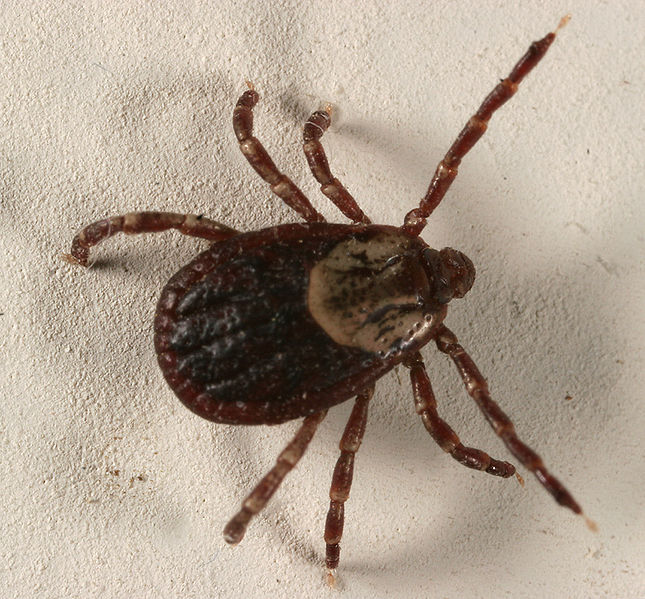
It’s still largely a Lower 48 problem, but being bitten by a tick can have serious health consequences.
There’s Rocky Mountain spotted fever and Lyme disease, both of which can cause long-lasting organ, joint and neurological problems, which in some cases can be fatal.
The good news for Alaskans is the ticks that carry that disease have not been found in Alaska.
The bad news is, there’s nothing stopping Alaska’s resident ticks from acquiring them from visiting people or pets. Yes, Alaska has resident ticks.
“It really surprises me how many Alaskans and even veterinarians are unaware there are ticks on wildlife,” said Kimberlee Beckmen, wildlife veterinarian for the Alaska Department of Fish and Game in Fairbanks. “But they don’t get on people or dogs that often. If someone doesn’t have personal experience with it, they don’t realize that there are these ticks here.”
Beckmen said Alaska’s squirrels and voles have always harbored ticks, and there is an increase in ticks among dogs, too.
She said they all could be a path to introducing serious infections from Outside into Alaska.
“We’re concerned because pets and people are showing up with ticks that are coming up from the Lower 48 that could be infected. Especially since there are high rates of infection in ticks in the Lower 48,” she said. “If a person or pet was infected with one of those diseases and was bitten by one of our native ticks, they could then introduce that disease to the environment.”
As worrisome as Lyme disease or Rocky Mountain spotted fever are, the rates of infection among humans are relatively low, according to the Centers for Disease Control and Prevention, especially if caught and treated with antibiotics early.
What has Beckmen’s rapt attention is the “moose winter tick.” She said it is one of the drivers responsible for the marked decline in moose in Minnesota, Vermont and New Hampshire.
“The moose winter tick is very, very serious, and we need to be able to react immediately to try get it under control before it spreads widely,” Beckmen said. “That’s why we want to make sure that we detect it right when it is first introduced.”
She said the moose winter tick already has been found in populations of mule deer, caribou and elk in Canada’s Yukon Territory.
Beckmen is seeing a lot of ticks coming into the state on people and pets, both tourists and returning Alaskans, and has some advice.
“Make sure if you go to the Lower 48 or you have friends coming up, that before they come up, they put a tick preventative on the dog, so that they don’t introduce any additional ticks.”
Beckmen would like to see any ticks found on large game animals, and there is a submission form on the Fish and Game website.
Ticks found on people or pets can be sent to the state epidemiologists in Anchorage.
